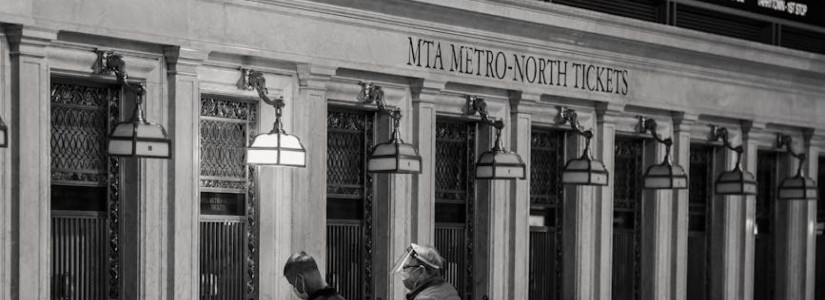Tiny, Fold-Up Homes Increase Position to Provide Housing Solutions
When Elon Musk purchased Twitter for over $40 billion dollars, the world was pretty polarized on the news. Though not so much because one person was buying the world's biggest social media platform, but more so because Elon Musk is pretty polarizing as a figure. Even still, Musk seems to really drive innovation and interest based on what he's doing. So when news broke that he invested in and even purchased a tiny home to live in, the market around tiny homes went crazy, and more companies were able to spring up. You can find companies like Boxable, WeLive, Nanuk, Bedly, BluHomes and many more popping up. These companies produce tiny homes that can arrive on the back of a truck and be unfolded in hours, ready to live in - minus the furniture, toiletries and pots and pans that you'd probably want to have. Are these tiny homes the future of America? Can they solve the housing crisis?
First, it's important to truly understand what's happening with America's housing crisis. It isn't just one simple thing; it's an amalgam of factors playing a role in the market. First and foremost, construction on new homes is scant. Not only has the construction/carpentry sector failed to fully rebound from the COVID crisis yet, but most states and federal lands are not allowing building permits due to myriad factors like the immigration crisis, environmental activism, etc. Then you must also consider the fact that the Chinese government and multinational corporations like BlackRock and Vanguard have been busy buying up trillions of dollars worth of land and existing houses. This has created a housing shortage, and this housing shortage has really jacked home prices up to an all-time high. And no one can forget about inflation; this is causing that all-time high housing price to go through the roof. Then you have stingy mortgage lenders who don't want to finance homes. Add it all up, and you have the makings of a rough housing market.
All told, America's housing market is in shambles. Most experts agree that it's just being artificially held in place by some inflated dollars from the Fed, and without that everything would be exponentially worse than the 2008 financial collapse. Even still, artificial measures can become organic and permanent; it really all depends on how strong the housing market can become in the interim. This is why so many people have high hopes for these new tiny houses. They're very affordable, with some of them able to be purchased, shipped and set up for under $50,000. They don't take up a lot of space at all. Best of all, they're ready to live in and don't require on-site construction. Can these little houses really save the market?
In truth, it's a crap shoot. Can they help housing? Surely they can. They're literal houses, after all; places people can live in and call a home. To that end, the more the merrier. An influx of new housing means housing prices drop, the demand is met by a supply, and the market can again stabilize. Though when discussing these tiny houses, things aren't all sunshine and roses.
Then you have to factor in the market parity issue that's currently taking place. A Boxabl home, for instance, used to be available for under $50k; until Elon Musk made them popular, that is. Now they cost over 50% more because there's such a demand for them, and the company is trying to capitalize on the tiny home fever. With market parity taking over, most of the other companies have also upped their pricing options, leaving only a few sticking to that under-50k mark.
The truth is that these tiny homes might help if people live in areas where good zoning practices and easy infrastructure, but they're far from the saviors of the housing market. Elon might have to sit this one out.
First, it's important to truly understand what's happening with America's housing crisis. It isn't just one simple thing; it's an amalgam of factors playing a role in the market. First and foremost, construction on new homes is scant. Not only has the construction/carpentry sector failed to fully rebound from the COVID crisis yet, but most states and federal lands are not allowing building permits due to myriad factors like the immigration crisis, environmental activism, etc. Then you must also consider the fact that the Chinese government and multinational corporations like BlackRock and Vanguard have been busy buying up trillions of dollars worth of land and existing houses. This has created a housing shortage, and this housing shortage has really jacked home prices up to an all-time high. And no one can forget about inflation; this is causing that all-time high housing price to go through the roof. Then you have stingy mortgage lenders who don't want to finance homes. Add it all up, and you have the makings of a rough housing market.
All told, America's housing market is in shambles. Most experts agree that it's just being artificially held in place by some inflated dollars from the Fed, and without that everything would be exponentially worse than the 2008 financial collapse. Even still, artificial measures can become organic and permanent; it really all depends on how strong the housing market can become in the interim. This is why so many people have high hopes for these new tiny houses. They're very affordable, with some of them able to be purchased, shipped and set up for under $50,000. They don't take up a lot of space at all. Best of all, they're ready to live in and don't require on-site construction. Can these little houses really save the market?
In truth, it's a crap shoot. Can they help housing? Surely they can. They're literal houses, after all; places people can live in and call a home. To that end, the more the merrier. An influx of new housing means housing prices drop, the demand is met by a supply, and the market can again stabilize. Though when discussing these tiny houses, things aren't all sunshine and roses.
Wait, There Are Some Drawbacks
You have to understand that these tiny houses aren't just home-ready. They need infrastructure. They need to be tied into the grid in terms of plumbing and electric. They need foundations, sewer drains, water pipes, and stable power. If people were moving off-grid, they wouldn't need these sorts of pop-up tiny homes. They would instead just build cabins somewhere on the mountainside. With these houses, they still need to be settled into foundations and tied into the grid, and so at least some construction, zoning and permitting would have to take place. If those things were taking place in most states, there wouldn't be a housing shortage to begin with, and home prices wouldn't be over 200% higher than their all-time high right now. So it's just not as easy as it seems.Then you have to factor in the market parity issue that's currently taking place. A Boxabl home, for instance, used to be available for under $50k; until Elon Musk made them popular, that is. Now they cost over 50% more because there's such a demand for them, and the company is trying to capitalize on the tiny home fever. With market parity taking over, most of the other companies have also upped their pricing options, leaving only a few sticking to that under-50k mark.
The truth is that these tiny homes might help if people live in areas where good zoning practices and easy infrastructure, but they're far from the saviors of the housing market. Elon might have to sit this one out.









